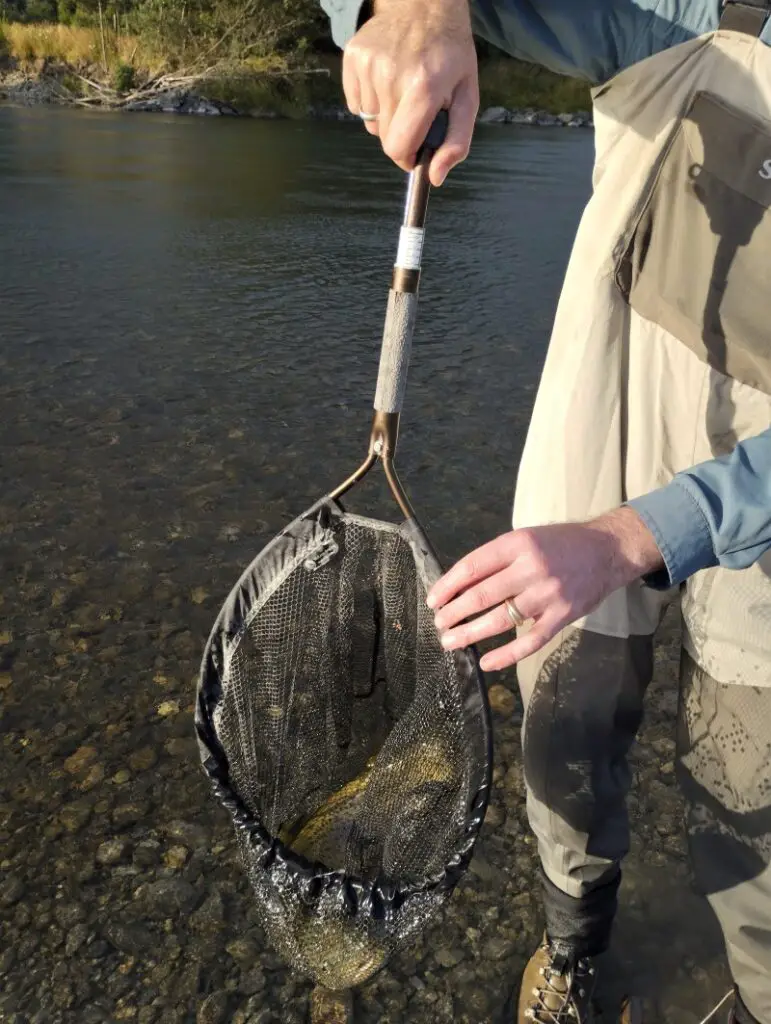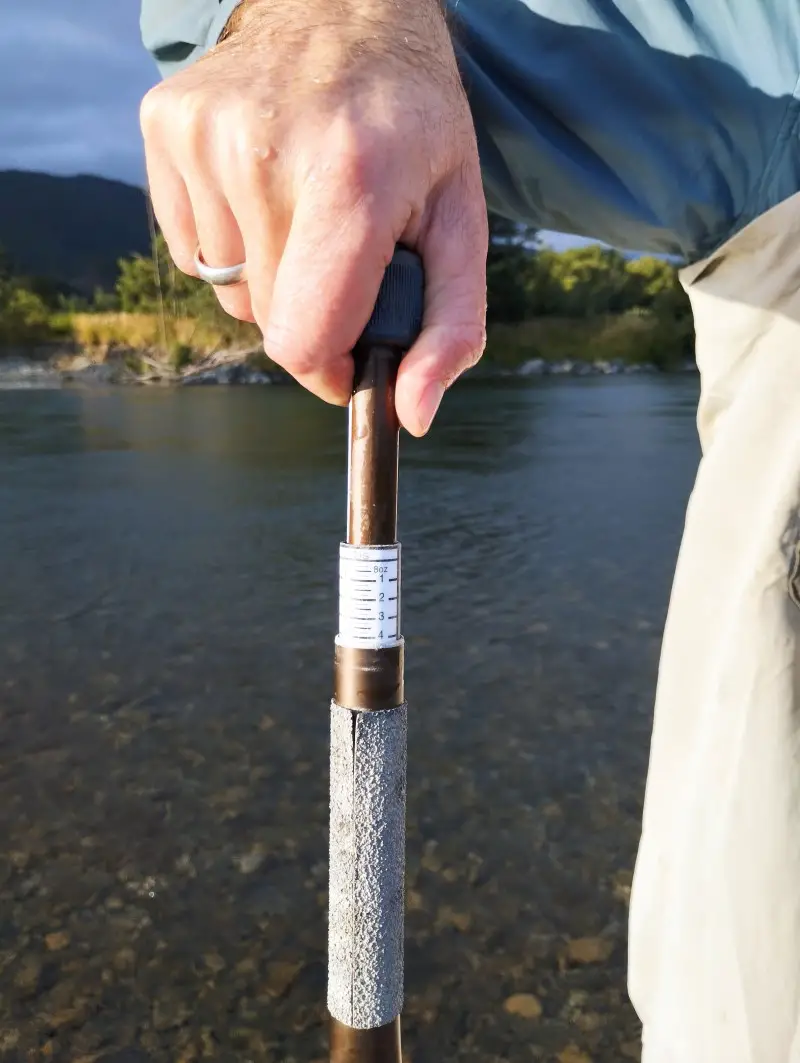Weighing trout, you plan on releasing is a bit tricky. They are fragile fish and can easily be injured by unnecessary handling.
For this reason, many fishermen decide it is easier to guesstimate a weight or even measure the trout instead. Of course, such methods are quite vague, and fishermen being fishermen will always exaggerate. The only accurate way to know how much a trout weighs is to use scales.
Firstly, I want to highlight that when weighing trout you plan on releasing do not use lip-grip scales. It is best practice to avoid weighing trout via the jaws. Both lip grip scales and hook scales should not be used. Trout have weak jaws, and hanging a live trout by its jaws can easily result in a dislocation. This will later prevent the trout from feeding, and its eventual untimely death.
I will start by my favorite way to weight trout, that is a weigh net. A landing net with scales integrated into the handle.
1) Weigh net – A Landing net with integrated scales.

This is the only method of weighing trout I use when I am practicing catch and release.
The best way to weigh a trout is in a weigh net. A weigh net is a landing net with a set of scales integrated into the handles. Using a weigh net could not be simpler or faster and no need to spend time attaching another set of scales.
The weighing process is easy. Land the trout in the net, then lift the net out of the water and use the integrated scales to quickly weigh the trout before returning it to the water. I am sure there are other brands out there, but I have always used a landing net made my Mcleans Angling, I have written about it here.
Weigh nets are the best method to weigh trout for several reasons.
2) Weigh trout inside a net using a pair of hand scales.
Not everyone wants to buy a new net. But for trout you plan on releasing it is still best practice to weigh them when they are still in the net.
This is best done by hooking hand scales somewhere around the net frame and weighing the net and fish together. Later do some basic math’s to subtract the weight of the net, or don’t and pretend the trout is bigger than it actually is. It is also possible to calibrate most scales to minus the weight of the net.
Hand scales are a lightweight, compact, and fairly cost-effective way to weigh trout. Out of all hand scales, I like tube scales the best due to their compact dimensions. They are basically just a tube, with an internal spring and a hook. A quality pair of tube scales can easily last decades, if not a lifetime.
It is important to remember to calibrate the scales to automatically adjust for the weight of the net. If you forgot to calibrate the scales, then you have to weigh the net empty and manually subtract the weight.
I personally use a very old spring scale which is no longer made. Most of the modern ones I have seen are cheaply made, although if I was buying today there are two models I will consider.
Budget option: Rapala tube scale is my budget pick. Good accuracy, comfortable handle, and corrosion resistance due to stainless steel construction. My only complaint is that the ‘measure’ is a sticker, and the adhesive might eventually fail. Available in 15, 25, and 50-lb models. Unless you are after trophy trout the 15 and 25lb models are more accurate at the lower end of the scale.
Premium option: Manley Brass Fishing Scale. Extremely well-built from corrosion-resistant brass, should last life a time. 8.5″ long. Also, good to accurately test drag settings. Maxes out at 50lb.
Mechanical vs Electronic hand scales?
Mechanical tube scales have several advantages over electronic scales. Firstly, they contain no electronics to short circuit. Secondarily they do not have batteries, so are always ready to go no matter how long they have spent in storage.

3) Electronic scales are bulkier but work well.
Electronic scales function in a very similar way to hand scales but give a digital readout. Due to their internal electronics, they also tend to be less reliable.
Electronic scales run on batteries, mine always seem to be flat whenever I need them the most. I have owned a few pairs of electronic scales over the years and while fairly accurate corrosion usually ends up killing them. Although, I do use them for inshore fishing as well, which might be the cause of their short life expectancy.
In general, when wading. I still prefer a mechanical scale because the design is more compact and they fit better into my vest pocket.
I can not really give any recommendations for brands, because there are too many and all the ones I own eventually die. If you do buy one made sure it can be calibrated.
In saying that, I do like the compactness of the Rapala 25 Lb. Mini Digital Scale. Its small size makes it less bothersome to keep in a fishing vest pocket. Accuracy is okay.
Lip Grip Scales – Do not use them on trout
Lip grip scales as the name suggests are a combination of a lip holder and digital scales.
These should not be used on any trout you plan on releasing, because structurally trout, salmon, and chars are not strong enough to be hanged from their lips. It can dislocate their spine and in some cases rip their jaw. If you are practicing catch and release, do not use lip grips on trout.
I am personally not a big fan of the technology and find it is much faster just to scoop a fish up in a net to control it.

